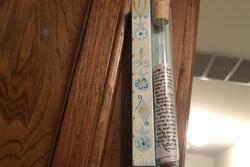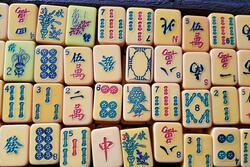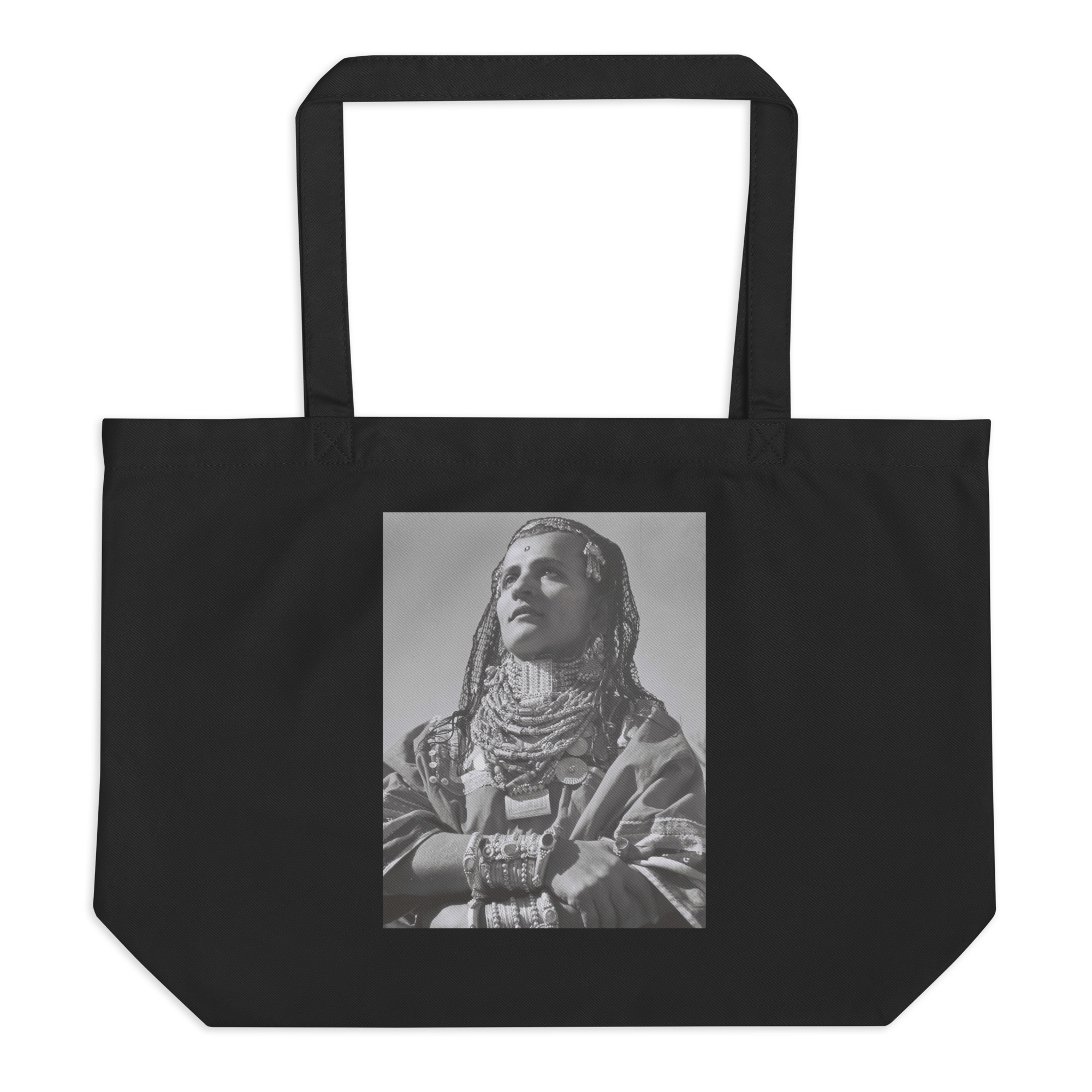L'dor Vador, Under One Roof
Recently, I’ve said many goodbyes: to family and friends who have passed away, to classmates who have moved to different cities after college, and to places I’ve lived where I’ve grown so much, as I moved from LA to Providence to Barcelona to New York. But the most difficult of these was saying goodbye to my grandparents’ home, a place that contained three generations of family memories. My grandmother decided to sell it in April 2025.
As a result of touring open houses as a child with my mom, I developed something of an expertise in old homes. By thirteen I could distinguish a Paul Williams from a Gerard Colcord or a Wallace Neff. Sometimes I step into an old house and can tell right away that amazing or terrible or historic moments have taken place there. What I learned from acquainting myself with dozens of old homes is that houses have souls like people do. That is certainly true of my grandparent's home on Sierra Drive.
My grandparents bought it in 1975, when my dad was six years old and his brother was four. The house was one of 300 private residences Gerard Colcord built in Los Angeles beginning in the 1920s. Colcord was known as Hollywood’s society architect, shying away from modernism and designing grand but homey and traditional houses for people like Bob Newhart and Harrison Ford. The house on Sierra Drive was constructed as a modest English country-style home on an expansive lot; the den featured a stone wood-burning fireplace, and the orchard of fruit trees governing the backyard made it feel like anywhere but Beverly Hills. From the moment I walk up the sprawling front driveway, I am enveloped in warmth and comfort—partly because of the amount of time I spent there, and partly thanks to Colcord’s intentionally homey design.
My grandparents did two substantial remodels, the first of which the original architect worked with them to design and execute, the second of which took place after Colcord’s death in 1984. A downstairs primary bedroom was added so that my grandfather, who lived with multiple sclerosis for over 60 years, wouldn’t have to climb stairs. The second project opened up the living space and enabled my grandmother’s love for entertaining to flourish.
Many stories my dad and uncle have shared about their childhood center around the house on Sierra Drive. In an era before cellphones, their neighborhood friends would congregate at the house on weekends to watch sports, swim in the pool, and devour feasts of bagels and lox prepared lovingly by my grandmother. They recall countless Thanksgiving dinners, Passover seders, and extravagant break-the-fast dinners. Three of their friends opted to host their weddings in the backyard—it was that special of a place, even to people who were not technically family.
One generation of memories contained within the house bled into another, when my dad and uncle both got married and had five kids (three for my dad, two for my uncle) in the early 2000s. All five grandkids learned how to swim in my grandparents' pool. A treehouse with a playset was installed in the yard for us to play in. One of my earliest memories is of my grandmother’s 65th birthday party, when I was 6 years old. The pool was covered and a huge tent adorned the backyard. The house had never felt so grand.
Summer barbecues, Shabbat dinners, graduation parties; a formal dining room with two circular tables large enough to seat our second cousins or have socially distanced dinners during Covid; a sun-drenched room at the center, where a plant I picked out a few summers ago grew multiple feet of vines. Skipping around the house with my siblings and cousins at the end of every gathering, singing a song we made up called “Good Night Night Night”; finding the afikomen buried between two couch cushions or inside the piano bench; trying on extravagant fur coats, purses, and jewelry in my grandma’s closet; singing on the back patio with my college a cappella group; finding love letters my parents wrote each other tucked inside drawers in my dad’s old bedroom; cartwheeling around the front lawn until I felt dizzy; the quiet creaks of the shiny wooden floorboards; the grandfather clock sitting quietly in the entry hall, its ticks keeping careful time.
Countless fundraisers took place in the sunroom at the center of the home for myriad causes that were meaningful to my grandparents and then to their children and grandchildren. From JWA parlor meetings to countless board meetings for our temple and LA-based nonprofits, to intimate political fundraisers for Democratic candidates. I once found an invitation to an event my grandparents hosted for Joe Biden when he was first running for Senate in the 1980s. I met Cory Booker at a grassroots fundraiser for his first campaign over ten years ago. So many important people have come through Sierra’s doors.
The kids and grandkids have always had their own keys to the house, but it truly became home for me during Covid, when I lived on Sierra for a few months. Sharing that space with my grandparents was so special to me, especially given that my grandfather passed away the following year. Dinners at the kitchen table would go on for hours and result in my favorite dynamic, in which my grandpa would tell a story from decades before, and my grandma would lovingly interrupt his train of thought to correct him and explain what had actually happened.
A year and a half after his death, I lived there with my grandma for the summer. It was comforting to be there with her, to spend hours sorting through my grandfather’s closet and breathing in the familiar scent of his cologne that still lingers in the hallway off the primary bedroom.
I left LA six years ago, but whenever I make plans to see friends when I’m home, they ask me to clarify which house I’m inviting them to: my parents’ or my grandparents’. Much like during my dad’s and uncle’s childhoods, my friends knew that Sierra’s door was always open. It was so much more than a family home to so many people; it was a sanctuary.
It was fitting that my bat mitzvah Torah portion was Parshat Terumah, the section of Exodus in which God provides detailed instructions to the Israelites for building a portable sanctuary. As I made sense of the story with my rabbis twelve years ago, I learned that Terumah is about the creation of sacred spaces—they don’t have to be traditionally sacred like a temple or place of worship to hold sacred significance.
Terumah is also about how we transition into and out of such spaces, and how we tend to these moments of change with intention and grace. Crossing the threshold into a synagogue, my disposition shifts. I change in a different way when I enter Sierra; it’s a place that is so comfortable to me, yet it contains such complex history. And so, when my grandmother decided a few months ago that it was time for her to move on to her next chapter—to sell Sierra and downsize into a condo—it only felt right that we bid farewell to this precious house with an evening of sacred celebration and prayer.
We called up Rabbi Laura Geller and Rabbi Jonathan Aaron, two rabbis who border on family members, both of whom were hired to join Temple Emanuel’s clergy in Sierra’s living room. If I could put everyone who has ever stepped into the house inside a diagram of concentric circles, these two rabbis would be in the next circle out from our immediate family.
With two cousins via Zoom, everyone was able to partake in a special “Ceremony of Goodbye” at the house in April. We began in the sunroom by saying the Shehechiyanu and hearing some words from Rabbi Geller about the passage of time. It was during the singing of “The Circle Game” by Joni Mitchell that I started to cry. It dawned on me in that moment that I was crying harder than I had a few years prior at my grandfather’s funeral (and at many other difficult moments since then). It took me a while to realize that my emotional response stemmed from this being what felt like the very last goodbye to my grandfather. There was a subconscious solace I experienced inside Sierra that assured me my grandfather’s soul was still present.
I closed my eyes and thought about this, as tears streamed down my cheeks during Rabbi Aaron’s guided meditation. We were asked to picture significant memories that took place in this space, and then we said, “Baruch otanu b’vo-einu, Baruch otanu b’tzei-teinu"—We are blessed as we come here, we are blessed as we leave here.
We recited this prayer each time we left a room, to bid each individual space farewell and thank it for all that it gave us. We walked from the sunroom through the dining room and paused for reflection in the upstairs bedrooms, where my dad and uncle shared anecdotes about the games they used to play together and the baseball cards they collected. We traveled downstairs to the primary bedroom to hear from my grandmother about the wonderful and difficult times she spent there with my grandfather, especially towards the end of his life. We said goodbye to the kitchen, which will always smell like my grandma’s chocolate coconut macaroons, and we paused in the formal living room to examine her exquisite Judaica collection, from yads [Torah pointers] to havdalah spice boxes.
I led a tearful rendition of “L’dor Vador,” (from generation to generation) my grandfather’s favorite Hebrew prayer and a mantra he lived by every day and instilled in the fabric of our family. He would be so proud of this intergenerational moment of intimate reflection and unconditional love.
The rabbis led us through our final blessings inside the home. Rabbi Aaron reminded us that our journeys continue with these blessings, leading into the singing of “Lechi Lach,” ("Go forth for yourself,") inspired by the verse in Genesis where God tells Abraham to leave his homeland. And then, we closed the door for the very last time.
Once on the other side, we gathered hand in hand on the front stoop. We shared blessings for my grandmother as she begins a new chapter and leaves this precious place behind. It is not lost on me that it is a blessing to have been able to bid Sierra farewell in the way that we did. While I was in no way ready to say goodbye to the house, I understand that my grandma was, and I want to support her in this transition. Most people are forced by circumstance to say goodbye to the family home and the person who inhabited it at the same time, unable to distinguish between the two types of grief. We are so lucky that my grandmother was able to share in this goodbye with us.
It is also a blessing to be able to say goodbye to a house while it’s still standing, given the devastating fires that ravaged Los Angeles this past January. So many people feel a similar emotional attachment to their homes but were not able to say goodbye to them or to anything inside them.
I would encourage anyone moving on from a home that contains precious memories to give it a proper goodbye, whether or not the structure still exists in its original form. Much of our ceremony relied on meditation and memory; with our eyes closed, we imagined the space throughout the 50 years it belonged to our family. Those memories will last forever.
I learned from Rabbi Geller and Rabbi Aaron that it is tradition when moving out of a Jewish home to leave the mezuzah attached to the front door. The mezuzah offers a blessing and Divine protection to the home on which it is placed. It is my great hope that it continues to protect the space—to bless it with love and fill it with joy. I hope that the next family can sense Sierra’s history and warmth when they enter the door. I hope they continue its story.









